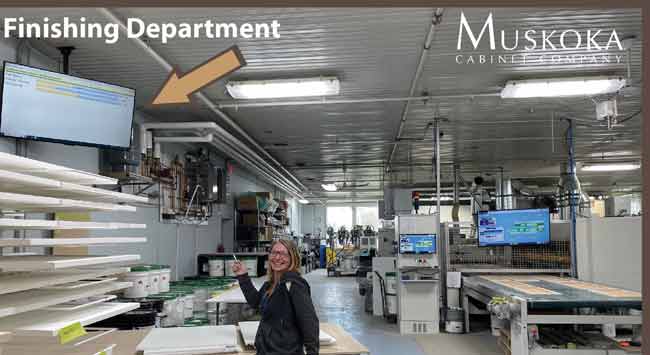Thursday, May 18, 2023

Muskoka Cabinet Co. is striving to refine a new profit-sharing program so that its production employees can make more money while simultaneously investing in its latest round of robots to eliminate the most strenuous and tedious tasks in the assembly department.
Luke Elias, president of Muskoka Cabinet, will discuss these and other initiatives that are designed to improve the company’s culture, boost productivity, and strengthen the bottom line in his opening keynote presentation of the 2023 Woodworking Machinery & Supply Conference & Expo (WMS).
Robotic cabinet assembly in the works
Since taking ownership in 1989, Elias has transformed Muskoka Cabinet into one of North America’s most technologically advanced woodworking factories and a shining example of Industry 4.0.
Under his leadership, Muskoka was an early adopter of nested-based manufacturing in 2000, implemented ERP software in 2004, fully converted to automated water-based finishing in 2005, became a paperless shop floor in 2009, began using RFID product tracking in 2012, installed its first production robots in 2015, and automated part tracking and movement in 2017. More recently, Muskoka implemented an RFID-enabled robotic panel processing cell, which Elias has called “the most automated, fastest panel processing cell in the world,” and an RFID-enabled finishing line, capable of increasing the company’s finishing output by 50 percent.
“We have developed a lot of the tooling including specialized clamps. We are ready to begin programming each of the robots to perform the functions that we need them to do,” Elias said. “The goal is to have the line set up and operating in September.”
“We need to get rid of those low-value, manual labor positions that we can only afford to pay $18 an hour for someone to do. That’s not a living wage,” Elias added. “We will use robots to move pieces around instead of humans. When you start thinking that way, what does that mean for the humans? Well, somebody has to maintain the robots. Somebody still has to watch the scheduling and watch the flow. Humans have to program and reprogram the robots.
“We’ve never laid off an employee because we automated a process,” Elias concluded. “Instead, our goal is to create opportunities for our people to upskill.”
Tags: Muskoka Cabinet Co, WMS 2023, wood, wood and panel, woodworking, woodworking and manufacturing, woodworking event, woodworking industry, woodworking USA